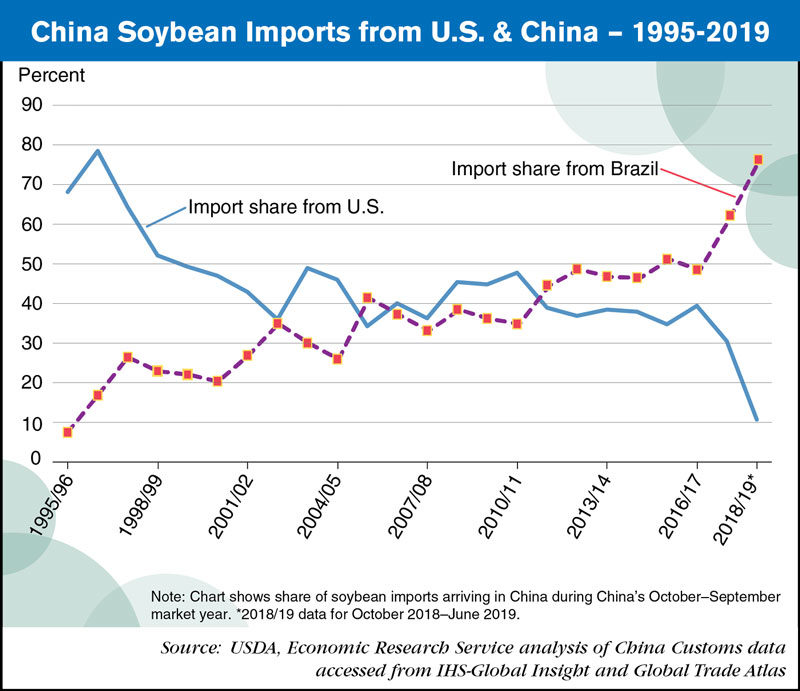The U.S. share of China's soybean imports has dropped to 10% in the 2018-2019 market year, while Brazil's share has grown to 77% in the same time period. Tariffs on U.S. soybean exports to China have heavily impacted the crop's imports to China.
In the 1990s, the United States was the predominant exporter of soybeans. During the late 1990s, both U.S. and Brazilian exports increased to supply China’s growing demand, but Brazilian exports grew more quickly. During the 1990s, the United States supplied more than 50% of China’s soybean imports, though the U.S. share gradually declined into the 2000s. Brazil’s share first matched that of the United States in 2002 when each country supplied about 35% of China’s soybean imports. From 2002 to 2011, each country’s share of China’s soybean imports fluctuated between 35-50%. Brazil’s share rose to almost 50% during 2012 to 2016 as the U.S. share fell to less than 40%. The U.S. share fell to 30% in 2017 as China’s tariff on U.S. soybeans took effect late in the market year.
This chart appears in the ERS report, “Interdependence of China, United States, and Brazil in Soybean Trade,” released in June 2019.




